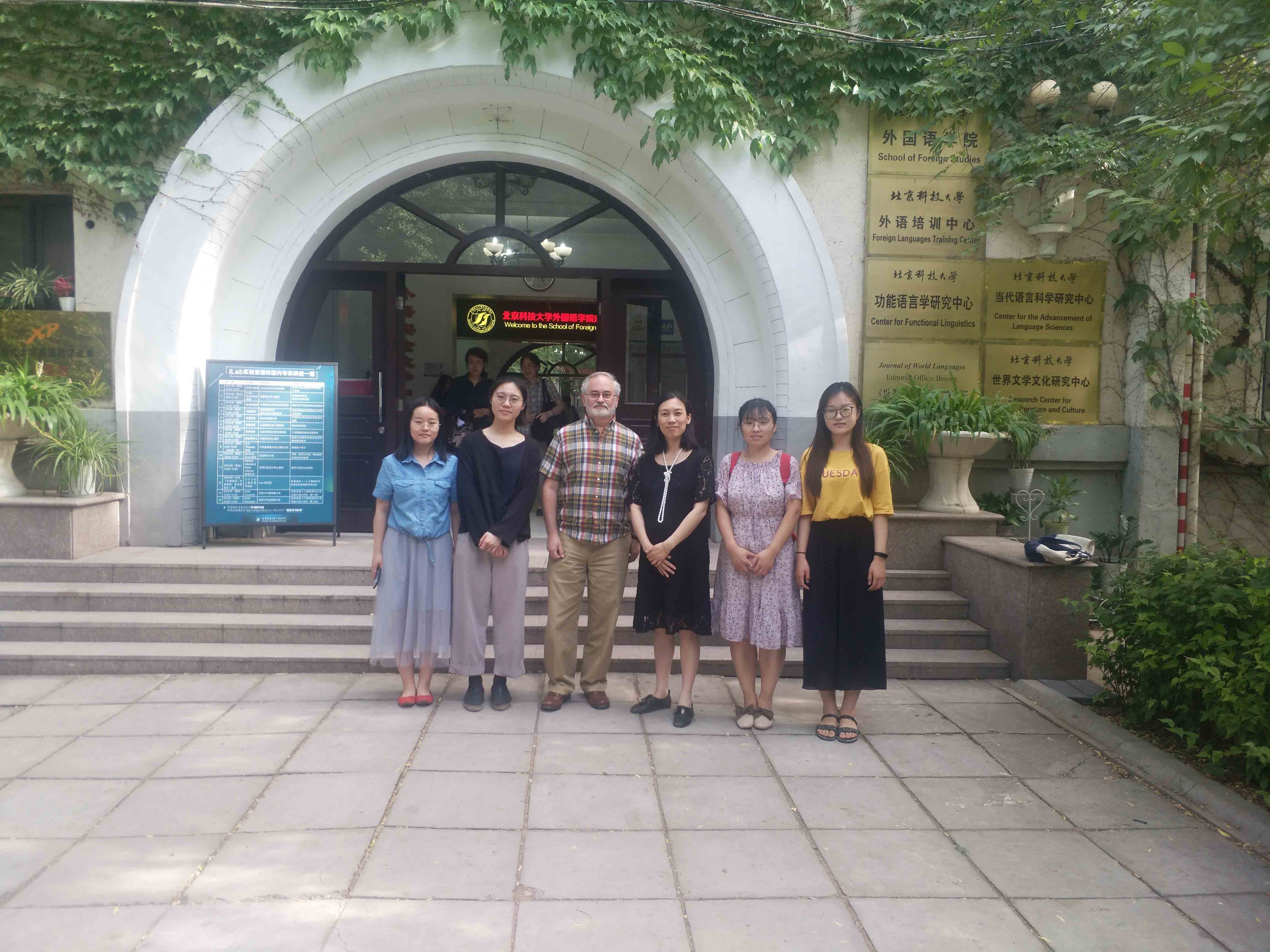Morphology and the Reading Network

From May 29 to June 1, 2019, at the invitation of Professor Xue Jin from the SFS, Professor John Kirby from Queen’s University of Canada visited USTB for scientific exchanges with Professor Xue’s research team on contemporary language science. Professor John Kirby is professor emeritus of Faculty of Education at Queen’s University and adjunct professor at the Centre for Neuroscience Studies at Queen’s University. His research area involves reading psychology and the learning concepts of students. Current research projects include predictors of reading difficulties, cognitive processes in reading comprehension, and students’ learning methods.

On May 30, 2019, at 10:00 a.m., Professor John Kirby gave a lecture on Morphology and the Reading Network to students and teachers in Room 309 of the SFS. The lecture focused on five aspects, including the Reading Network, Role of Morphology, A Predictive Study from Grade 3 to Grade 5, Instructional Studies and Conclusions. Professor John Kirby first introduced the neural basis of the dual pathway of the left cerebral hemisphere (Vental) and the abdomen (Dorsal) during reading. In this course, Professor Kirby elaborated four ways to predict the reading process: meaning path, decoding path, speed path and deep path. Professor Kirby emphasized the similarities and differences of predictive and instructional studies on word morphology to reveal the promotive role of morphological knowledge in reading process. With actively participation in the discussion, teachers and students deepened their understanding of the neural basis of the reading process and the role of morphological knowledge in reading through Professor Kirby’s erudition and case analysis.
At 14:00 p.m., Professor John Kirby was invited to visit the laboratory for language cognition and learning science of the SFS and to start an academic salon. Professor Xue first introduced the laboratory and members, and then the members made presentations on their current research. After presentation, Professor Kirby made constructive comments and looked forward to further cooperation of the two schools. After the salon, Professor John Kirby had a more in-depth discussion with students and faculty members on dyslexia.
